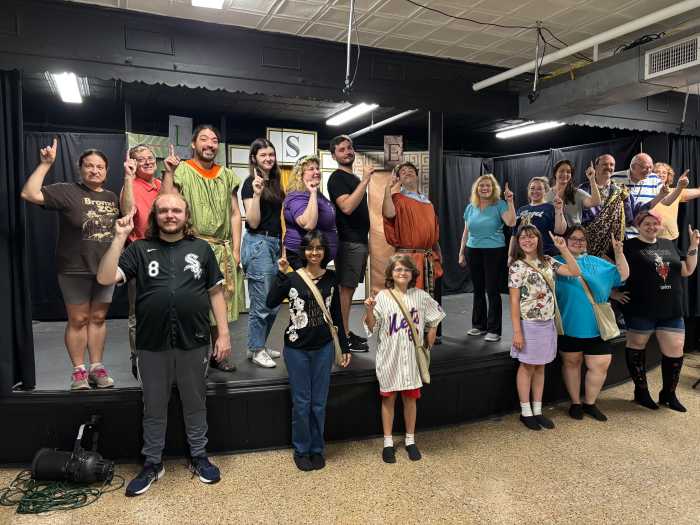By Karen Frantz
In the basement of a science and technology center for children, Tronian, a small robot made out of Legos that resembles a dune buggy, drove forward on a table with a red plastic ball clutched in its plastic arm.
It maneuvered past various obstacles on the table — including toy models of a weight-lifting bench and a set of stairs — to stop at several upright pegs in the shape of bowling pins.
Six students, ranging in age from 10 to 14, gathered around with their coach and parents and watched the robot intently.
The robot hurled the ball at the pins, knocking almost all of them over.
“Yay,” cheered the parents.
“Well done,” said Dennis Chan, the youths’ coach.
The team of six had been gathering in this basement, a classroom of the RoboMindTech Science and Technology Center in Fresh Meadows, at 185-10 Union Tnpk., once a week for the last six months to build the robot. The center brings together students from across the city to learn about science and technology through Lego robotics in after-school workshops.
The team built Tronian as part of its participation in the FIRST Lego League, an international competition that requires young minds to solve real-world problems using robotics.
The students sent the robot to compete at the New York City level and beat out 80 other teams with their creation. They will go to the final round in St. Louis, Mo., in April, where they will compete against teams from around the world for the top title.
Rachel Park, a Manhasset High School student and a member of the group, said she and her teammates were excited about going on to the final championship. She said New York does not compete in every Lego League competition, and this team is only the second from the city ever to go to nationals.
“Which is pretty good, a pretty amazing feeling,” she said.
This year the Lego League competition asked participants to solve problems that affect seniors’ quality of life, a challenge that included both a robotic and a research portion. As part of the process, the team built Tronian from scratch to maneuver an obstacle course, requiring it not just to be able to bowl, but to lift weights, climb stairs and turn off a toy stove.
The students fitted Tronian with a computer brain and sensors that allowed it to travel across the course and complete its tasks. It can lift levers, balance on a shaky platform and even sense colors, things seniors may have difficulty doing, the students pointed out.
Chan, who is also RoboMindTech’s creator, said teaching students about science and technology through Legos can make learning more fun and spur youngsters to pursue a path in the sciences later on.
“We use robots and Legos to inspire children’s minds,” he said.
Reach reporter Karen Frantz by e-mail at kfrantz@cnglocal.com or by phone at 718-260-4538.




































